Nestled amidst the rugged mesas and canyons of southwestern Colorado, Mesa Verde National Park stands as a testament to ancient civilizations. Established in 1906, it holds the unique distinction of being America’s first national park dedicated to preserving cultural heritage. This archaeologically significant park offers a profound glimpse into the lives of early inhabitants, making it a must-visit for history enthusiasts and nature lovers alike.
Mesa Verde protects over 5,000 archaeological sites, including 600 spectacular cliff dwellings built by the Ancestral Puebloans between 600 and 1300 CE. Located just 10 miles east of Cortez and 35 miles west of Durango, this UNESCO World Heritage Site offers an unparalleled glimpse into a sophisticated civilization.
The park’s 52,485 acres encompass not only the famous cliff dwellings but also a diverse ecosystem. The Ancestral Puebloans, formerly known as the Anasazi, created an intricate society that flourished for over 700 years. They mysteriously abandoned their cliff dwellings around 1300 CE.
Their legacy remains preserved in remarkable architecture, pottery, and rock art. These continue to reveal secrets about their daily lives, spiritual beliefs, and advanced understanding of astronomy and agriculture.
What makes Mesa Verde National Park truly extraordinary is the rare opportunity to step inside actual ancient dwellings. You can experience the ingenuity of a civilization that built entire communities into cliff faces.
From the massive Cliff Palace with its 150 rooms to the intimate Balcony House that requires crawling and ladder climbing, each site tells a unique story of human adaptation and creativity. The park’s combination of archaeological wonders, stunning natural beauty, and educational opportunities makes it an essential destination.
Things to Do in Mesa Verde National Park, CO
1. Explore the Magnificent Cliff Palace
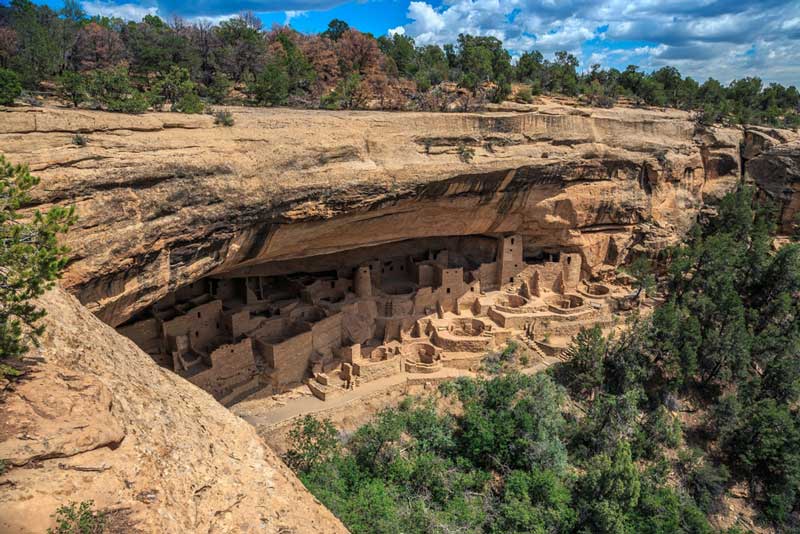
Cliff Palace
Cliff Palace stands as Mesa Verde’s crown jewel and the largest cliff dwelling in North America. It features 150 rooms and 23 ceremonial chambers called kivas. This remarkable structure, built into a natural alcove in the sandstone cliff, housed approximately 100 people during its peak.
Visiting Cliff Palace requires a ranger-guided tour. This takes visitors down into the alcove via stone steps and ladders, providing an intimate experience. The tour reveals fascinating details about daily life, including food storage, religious practices, and complex social organization.
Travel Tips: Tours are offered late April through October. Book online up to 60 days in advance; reservations are strongly recommended. The tour involves climbing ladders and walking on uneven surfaces, requiring moderate physical fitness. Bring water, sun protection, and wear sturdy shoes. Tours are about 90 minutes and cost $8.
2. Experience the Adventure of Balcony House
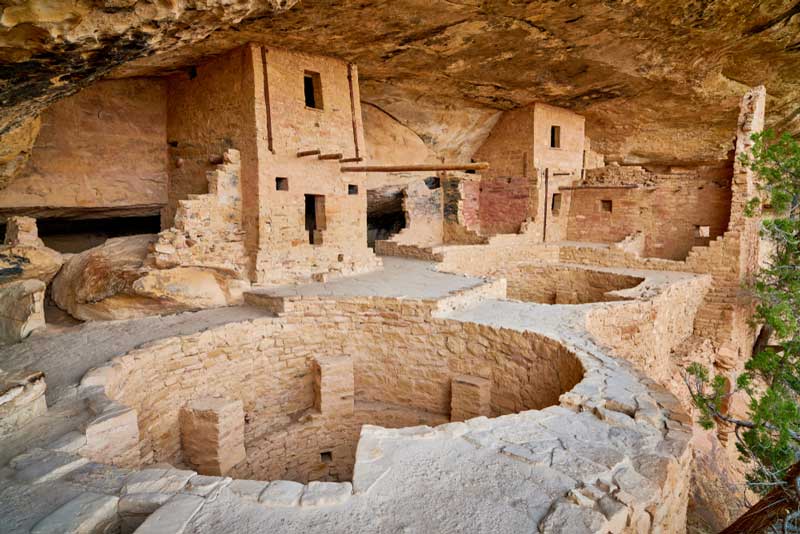
Balcony House
Balcony House offers the most adventurous cliff dwelling experience. It requires visitors to crawl through a 12-foot tunnel, climb a 32-foot ladder, and navigate narrow ledges. This medium-sized dwelling contains 40 rooms and was home to about 40 people.
The dwelling’s name comes from the prominent balcony structure. The site includes well-preserved rooms with original wooden beams and stone walls. The tour provides insights into the defensive nature of the location.
Travel Tips: Not recommended for those with mobility issues or fear of heights. Tours run late April through October, with advance reservations required. The experience lasts about 90 minutes and costs $8. Bring a camera, but be prepared for challenging photography conditions.
3. Discover the Sacred Long House
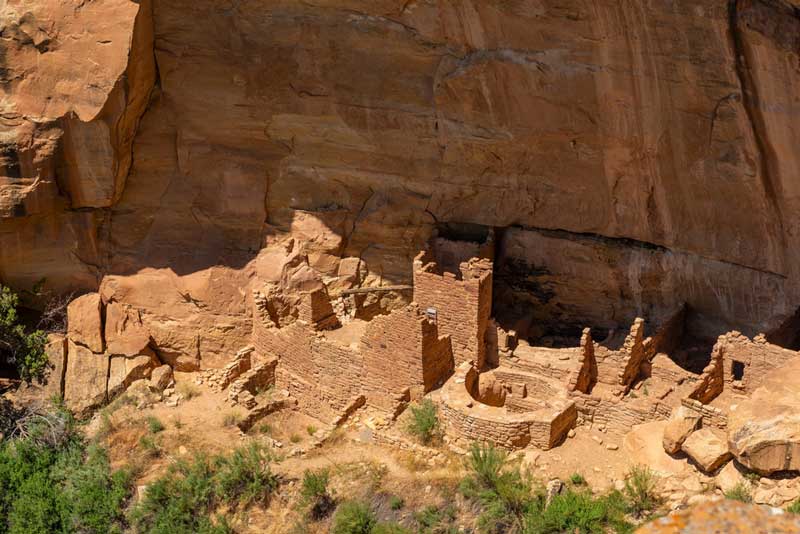
Long House is the second-largest cliff dwelling in Mesa Verde. It offers a more intimate touring experience on the less-crowded Wetherill Mesa. This remarkable site features 150 rooms and 21 kivas, including the park’s largest, measuring 25 feet in diameter.
The site’s preservation is exceptional, with many original features still intact. The tour focuses on the spiritual and ceremonial aspects of Ancestral Puebloan life. The dwelling’s position provides stunning views of the surrounding canyon.
Travel Tips: Access requires a tram ride to Wetherill Mesa, operating from Memorial Day through Labor Day. Tours are limited in size, so advance reservations are essential. The tour involves moderate walking and some climbing, but is less strenuous than Balcony House. Bring layers as the alcove can be cool. The experience lasts about 90 minutes and costs $8.
4. Walk Through the Spruce Tree House
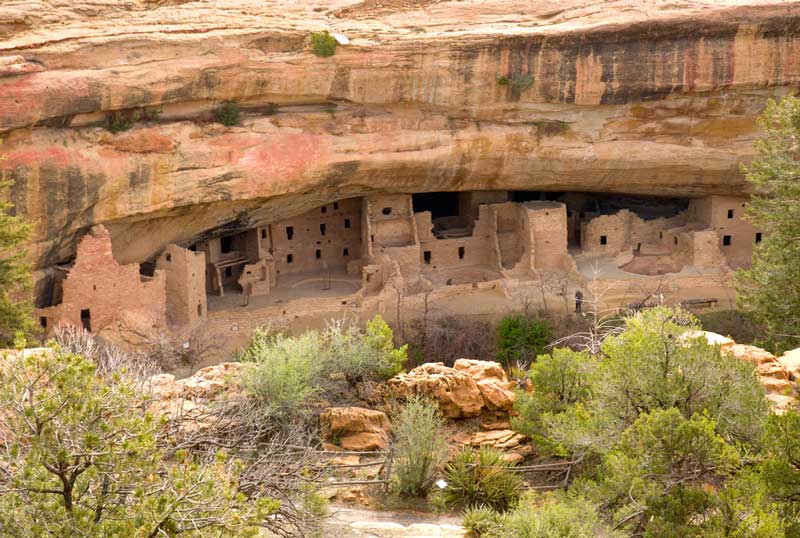
Spruce Tree House provides the most accessible cliff dwelling experience. It offers self-guided access during most of the year. This well-preserved site contains 130 rooms and 8 kivas, making it the third-largest cliff dwelling.
The dwelling’s excellent preservation allows visitors to see original construction details. Interpretive exhibits along the trail explain construction techniques and the function of different rooms.
Travel Tips: While typically self-guided, check current conditions as it sometimes requires guided tours. The paved trail is steep, requiring moderate physical fitness. Bring water and sun protection, as shade is limited. It’s accessible year-round, weather permitting, and admission is included with park entrance fees.
5. Explore the Mesa Top Archaeological Sites
Mesa Verde’s mesa tops contain thousands of archaeological sites. These tell the story of Ancestral Puebloan life before they moved to the cliff dwellings. The Mesa Top Loop Road provides access to numerous pit houses, pueblos, and other structures.
The loop road features several overlooks and short trails. These lead to well-preserved ruins, including early pit houses from the 600s CE and later pueblo structures from the 1100s. Each site provides interpretive exhibits.
Travel Tips: The Mesa Top Loop Road is accessible year-round. Allow 2-3 hours for the complete loop, including stops. Bring binoculars for better views. The road is suitable for most vehicles but can be challenging in winter. Pack snacks and water.
6. Hike the Petroglyph Point Trail
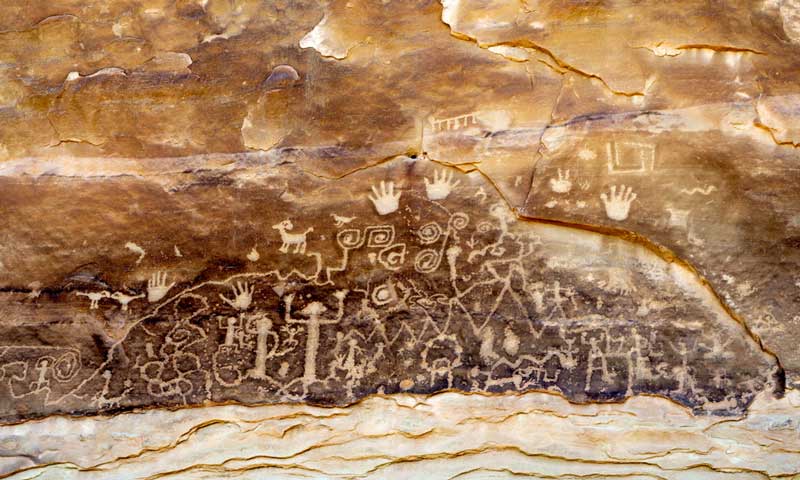
Petroglyph Point Trail
The Petroglyph Point Trail offers one of Mesa Verde’s most rewarding hiking experiences. This 2.4-mile loop trail leads to a sandstone alcove containing one of the park’s best-preserved petroglyph panels. It features spirals, handprints, and geometric designs.
The petroglyphs represent some of the finest rock art in Mesa Verde. The trail also offers opportunities to see the park’s diverse plant and animal life.
Travel Tips: The trail requires a self-guiding brochure from the visitor center. It involves some scrambling over rocks. Wear sturdy hiking boots and bring plenty of water. Typically open April through October. Allow 2-3 hours.
7. Visit the Chapin Mesa Archaeological Museum
The Chapin Mesa Archaeological Museum serves as the perfect introduction to Mesa Verde National Park. It houses one of the most comprehensive collections of Ancestral Puebloan artifacts in the Southwest. Exhibits showcase pottery, tools, and clothing, providing intimate insights into daily life.
The museum’s collection includes rare and beautifully preserved examples of Ancestral Puebloan craftsmanship. Exhibits are arranged chronologically, allowing visitors to trace cultural development.
Travel Tips: The museum is open year-round and is included with park admission. Plan 1-2 hours for exploring exhibits before visiting the cliff dwellings. The museum offers educational programs and talks. The gift shop features authentic Native American crafts.
8. Experience the Wetherill Mesa Scenic Drive
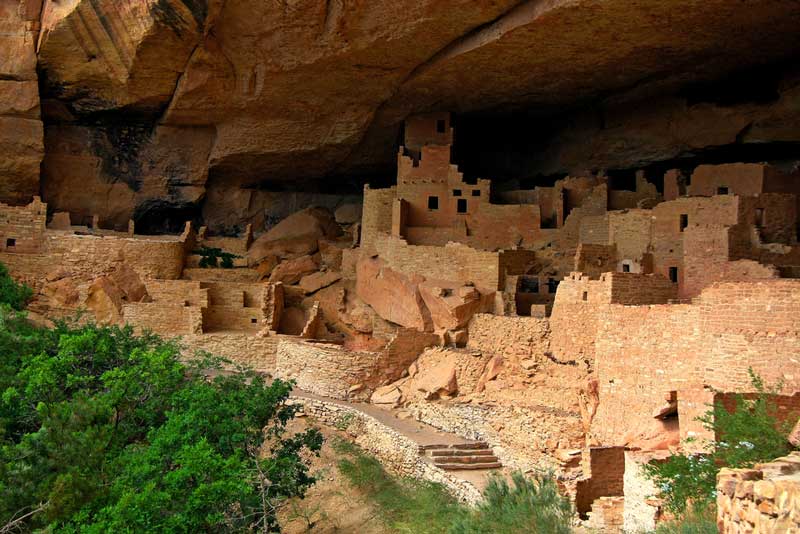
Wetherill Mesa
Wetherill Mesa offers a more secluded Mesa Verde experience, accessible only by tram during the summer. This less-visited area provides access to Long House, Step House, and the Nordenskiold Site #16. It also has spectacular overlooks.
The tram ride itself is part of the experience, winding through diverse ecosystems. The mesa’s elevation provides cooler temperatures and different vegetation.
Travel Tips: Wetherill Mesa is accessible Memorial Day through Labor Day, with trams every 30 minutes. Advance reservations are recommended for guided tours. The tram ride is included, but Long House tours require separate tickets. Bring layers. Plan a full day.
9. Explore the Badger House Community
The Badger House Community represents one of Mesa Verde’s most extensive mesa-top archaeological sites. It contains structures spanning over 600 years of occupation. This complex includes pit houses, transitional structures, and elaborate pueblos.
The site’s interpretive trail guides visitors through the chronological development of the community. Well-preserved ruins include numerous rooms, kivas, and specialized structures.
Travel Tips: Access the site via the Mesa Top Loop Road. The interpretive trail is self-guided and suitable for most fitness levels. Plan 1-2 hours. The site offers excellent photography opportunities.
10. Discover the Far View Sites Complex
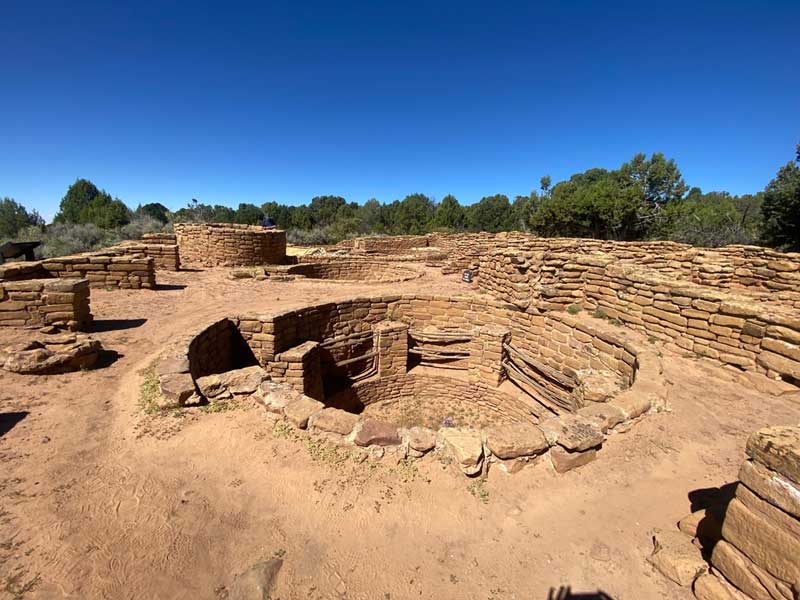
Far View
The Far View Sites Complex showcases some of Mesa Verde’s most impressive mesa-top ruins, including Far View House and Far View Tower. These sites, occupied primarily during the 1100s and 1200s CE, represent the pinnacle of mesa-top architecture.
Far View House, the largest of the mesa-top sites, contains over 50 rooms and was likely a major population center. Its elevated position provided commanding views. Archaeological evidence suggests it served both residential and ceremonial functions.
Travel Tips: The Far View Sites are accessible year-round via a short walk from the Mesa Top Loop Road. Sites are self-guided with interpretive panels. Bring binoculars for better views. The elevated location can be windy, so dress appropriately.
11. Participate in Evening Ranger Programs
Mesa Verde National Park offers exceptional evening ranger programs. These provide deeper insights into Ancestral Puebloan culture, park archaeology, and ongoing research. Programs often include campfire talks, guided stargazing, and presentations on archaeological findings.
Evening programs take advantage of the park’s excellent night skies and peaceful atmosphere. Rangers share stories about the people who lived in the cliff dwellings and discuss preservation challenges.
Travel Tips: Programs are typically offered May through September. Schedules are available at the visitor center. They are usually free but may require advance registration. Bring warm clothing as temperatures can drop significantly.
12. Visit the Research Center and Collections
The Mesa Verde Research Center provides visitors with behind-the-scenes access to the park’s extensive archaeological collections and ongoing research projects. The center houses over 3 million artifacts and offers guided tours.
The research center also demonstrates the meticulous care required to preserve artifacts. Visitors can learn about dendrochronology (tree-ring dating), ceramic analysis, and other methods.
Travel Tips: Research center tours are limited and require advance reservations. They are typically available during summer months. Contact the park in advance to check availability.
13. Hike the Prater Ridge Trail
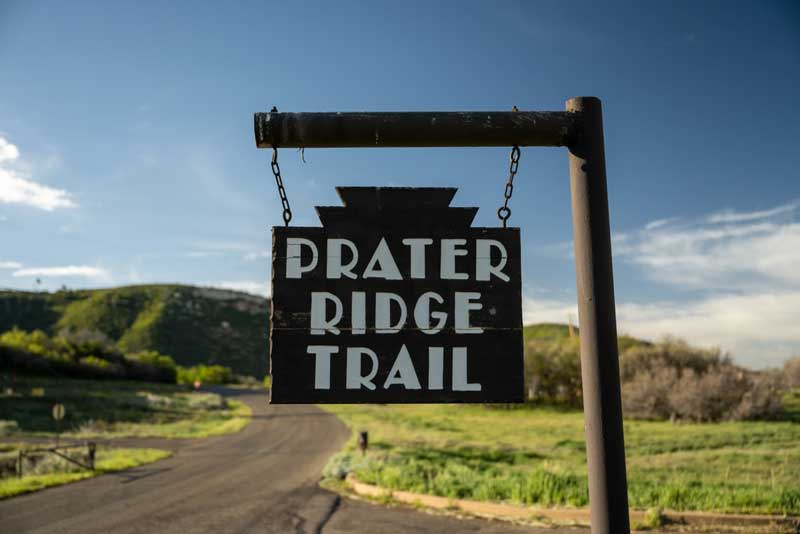
Prater Ridge Trail
The Prater Ridge Trail offers Mesa Verde’s most challenging hiking experience. This 7.8-mile round-trip trail follows an old ranch road through diverse ecosystems. It provides opportunities to see wildlife away from crowded archaeological sites.
The hike rewards visitors with panoramic views of the La Plata Mountains, San Juan Mountains, and surrounding canyon country. The trail also passes near several archaeological sites not accessible to the public.
Travel Tips: This strenuous hike requires good physical conditioning and proper preparation. Bring plenty of water, snacks, and weather-appropriate clothing. Typically accessible May through October, depending on snow. Allow 4-6 hours.
14. Explore the Knife Edge Trail
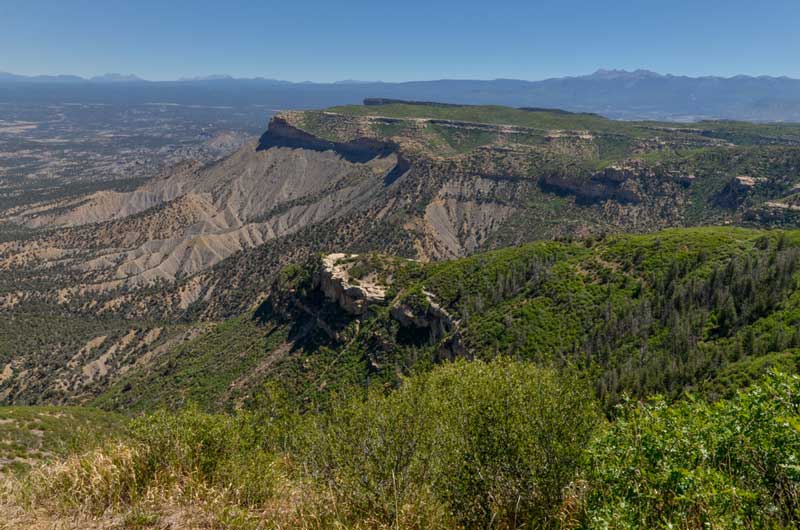
Knife Edge Trail
The Knife Edge Trail provides a moderate hiking experience with exceptional views of the Montezuma Valley. This 1.5-mile trail follows the rim of a narrow ridge, offering dramatic vistas. It passes several small archaeological sites.
The trail’s name comes from the narrow ridge formation. Interpretive signs explain the area’s geology, ecology, and cultural history. The trail also offers excellent birding opportunities.
Travel Tips: The trail is accessible year-round but can be challenging in winter. Wear sturdy hiking shoes and bring water and sun protection. It offers limited shade, so early morning or late afternoon hiking is recommended in summer. Allow 2-3 hours.
15. Experience the Junior Ranger Program
Mesa Verde’s Junior Ranger Program offers excellent educational opportunities for young visitors. It combines fun activities with learning about Ancestral Puebloan culture and archaeology. Kids can participate in archaeological simulations and learn about ancient pottery making.
The program emphasizes preserving cultural resources. Activities are designed to be engaging and age-appropriate. It also includes family-friendly activities.
Travel Tips: Junior Ranger booklets are available at the visitor center. The program is free and designed for children ages 6-12. Some activities may require advance registration. Allow 2-3 hours to complete the program and earn the badge.
Meet the top attractions in USA, here is a guide on the top things to do in White Sands National Park and the things to do in Zion National Park.
Local Travel Tips and Practical Information
Transportation and Access
Mesa Verde National Park is located in southwestern Colorado, approximately 10 miles east of Cortez via Highway 160. The park entrance is clearly marked. The entrance road winds up the mesa for about 21 miles to reach the main visitor areas. The park has two main areas: Chapin Mesa, which is accessible year-round, and Wetherill Mesa, which is only open from Memorial Day through Labor Day.
Nearby Towns and Services
Cortez serves as the primary gateway town, offering numerous hotels, restaurants, gas stations, and services. The town features several attractions related to Native American culture. Durango, about 45 minutes east, provides additional accommodation options and serves as a hub for exploring the broader Four Corners region.
Where to Stay
The park offers camping at Morefield Campground, which operates from April through October. It provides 267 sites for tents and RVs, a camp store, restaurant, and shower facilities. For hotels, Cortez offers numerous options. The historic Strater Hotel in Durango provides a unique lodging experience.
Best Times to Visit
The optimal visiting season runs from late April through October when all park facilities are open and weather is most favorable. Spring and fall offer the most comfortable temperatures and fewer crowds. Summer brings peak visitation but also the fullest range of programs. Winter visits are possible but limited to Chapin Mesa.
Weather Considerations
Mesa Verde’s high desert climate features hot summers and cold winters, with significant daily temperature variations. Summer temperatures can exceed 90°F during the day but drop to 50°F at night. Winter temperatures can range from below freezing to the 40s. Afternoon thunderstorms are common during summer months.
Frequently Asked Questions
How far in advance should I book cliff dwelling tours?
Cliff dwelling tours can be reserved up to 60 days in advance through the park’s website. During peak season (June-August), popular tours often sell out within hours. It’s recommended to book as early as possible. Some same-day tickets may be available, but availability is limited.
Are the cliff dwelling tours suitable for people with mobility issues?
Cliff dwelling accessibility varies significantly by site. Spruce Tree House offers the most accessible experience. Cliff Palace requires climbing steps and ladders but is moderately accessible. Balcony House is the most challenging, requiring crawling and ladder climbing. Long House falls between in difficulty. Contact the park for specific accessibility information.
What should I bring for a visit to Mesa Verde?
Essential items include comfortable walking shoes with good grip, plenty of water (especially during summer), sun protection (hat, sunscreen, sunglasses), and layers for changing temperatures. For cliff dwelling tours, bring a small backpack and camera. During summer, a light rain jacket is advisable for thunderstorms. Winter visitors should bring warm clothing and be prepared for icy conditions.
Conclusion
Mesa Verde National Park offers an unparalleled opportunity to step back in time. Experience one of North America’s most remarkable archaeological treasures. From the awe-inspiring cliff dwellings to the diverse hiking trails, every visit provides new discoveries.
The park’s combination of world-class archaeological sites, educational programs, and stunning natural settings creates an experience that resonates long after your visit ends. Mesa Verde provides connections to both human history and the natural world that few destinations can match.
